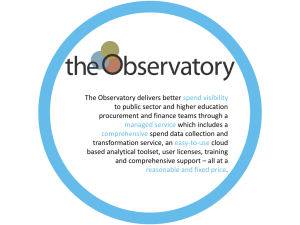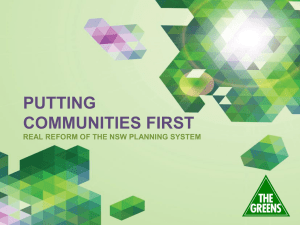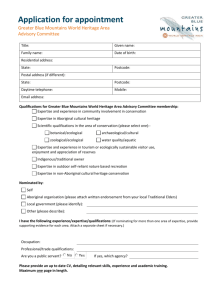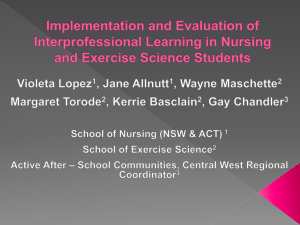background_to_site - Teaching Heritage
advertisement
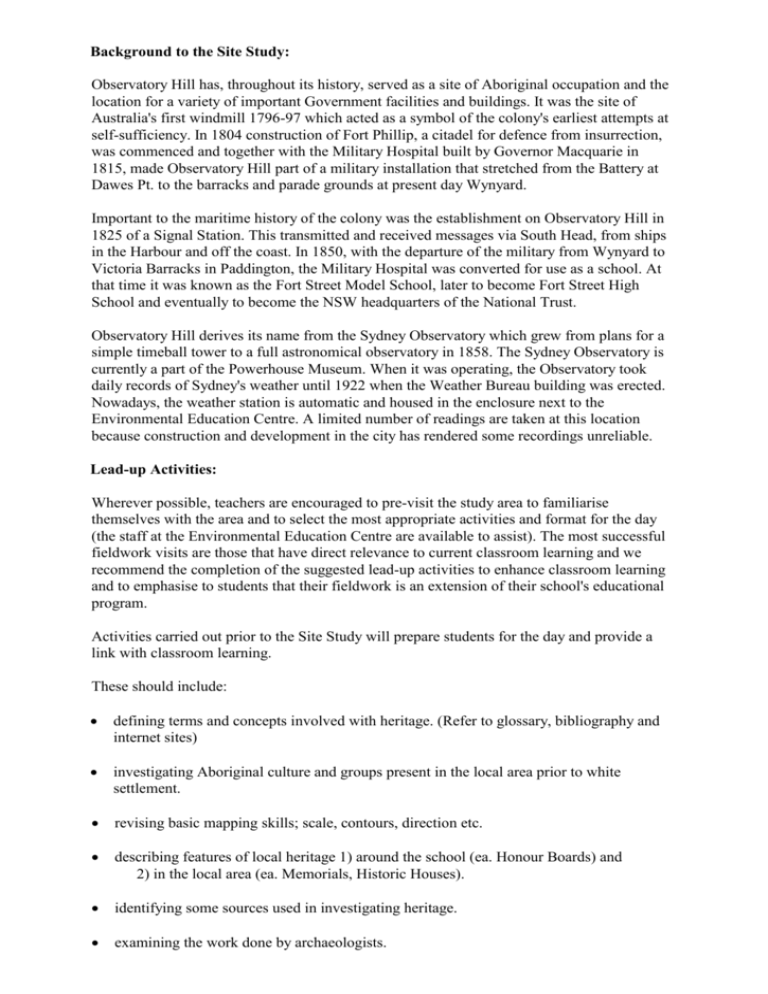
Background to the Site Study: Observatory Hill has, throughout its history, served as a site of Aboriginal occupation and the location for a variety of important Government facilities and buildings. It was the site of Australia's first windmill 1796-97 which acted as a symbol of the colony's earliest attempts at self-sufficiency. In 1804 construction of Fort Phillip, a citadel for defence from insurrection, was commenced and together with the Military Hospital built by Governor Macquarie in 1815, made Observatory Hill part of a military installation that stretched from the Battery at Dawes Pt. to the barracks and parade grounds at present day Wynyard. Important to the maritime history of the colony was the establishment on Observatory Hill in 1825 of a Signal Station. This transmitted and received messages via South Head, from ships in the Harbour and off the coast. In 1850, with the departure of the military from Wynyard to Victoria Barracks in Paddington, the Military Hospital was converted for use as a school. At that time it was known as the Fort Street Model School, later to become Fort Street High School and eventually to become the NSW headquarters of the National Trust. Observatory Hill derives its name from the Sydney Observatory which grew from plans for a simple timeball tower to a full astronomical observatory in 1858. The Sydney Observatory is currently a part of the Powerhouse Museum. When it was operating, the Observatory took daily records of Sydney's weather until 1922 when the Weather Bureau building was erected. Nowadays, the weather station is automatic and housed in the enclosure next to the Environmental Education Centre. A limited number of readings are taken at this location because construction and development in the city has rendered some recordings unreliable. Lead-up Activities: Wherever possible, teachers are encouraged to pre-visit the study area to familiarise themselves with the area and to select the most appropriate activities and format for the day (the staff at the Environmental Education Centre are available to assist). The most successful fieldwork visits are those that have direct relevance to current classroom learning and we recommend the completion of the suggested lead-up activities to enhance classroom learning and to emphasise to students that their fieldwork is an extension of their school's educational program. Activities carried out prior to the Site Study will prepare students for the day and provide a link with classroom learning. These should include: defining terms and concepts involved with heritage. (Refer to glossary, bibliography and internet sites) investigating Aboriginal culture and groups present in the local area prior to white settlement. revising basic mapping skills; scale, contours, direction etc. describing features of local heritage 1) around the school (ea. Honour Boards) and 2) in the local area (ea. Memorials, Historic Houses). identifying some sources used in investigating heritage. examining the work done by archaeologists. schools will need to reproduce a class set of Student Activity Booklets for use on the day. Students should be given a "walk through" in preparation for their visit. students should also have an opportunity to study contemporary and historic maps on The Rocks and Millers Point to place Observatory Hill within the context of the growth of the colony and its position in relation to the Central Business District. (Internet addresses may help here) Glossary Archaeology Citadel Bunya Nuts Copperplate Eora Heritage Kadigal Semaphore Site Study Tuhbowgule Warrane The scientific study of any culture by excavation and description of its remains. A fortress in or near a city built to fire upon the inhabitants in times of insurrection or unrest. Edible nuts of the Bunya - Bunya Pine. An ornate, rounded style of handwriting. The nation of Aborigines who lived in the Sydney region. The word itself means people. Also spelt EORAH and IYORA. Those valuable features of the historical and contemporary environment that we seek to conserve from development or decay so that future generations may share in the aesthetic, cultural, political, social and economic legacy bequeathed from one generation to the next. The Aborigines who lived in the area around Observatory Hill. A group of the Eora. A system of signalling in which a flag is held in each hand at arm's length in various positions. An enquiry-based visit to historically significant locations. (The field work involved is an integral part of the mandatory question on heritage in the History 7-10 Syllabus). The Eora name for Sydney Harbour. Also spelt TUBOWGULE. The Eora name for Sydney Cove. Also spelt WARRAN and WARRUN. Bibliography Board of Studies * Fitzgerald, S & Keating, C * Horan, Ronald S * The National Trust of Australia Kerr, James Semple NSW Dept. School Education Public Works Dept. of NSW * Vulker, Judy History 7-10 Syllabus, 1992 Millers Point. The Urban Village, Hale & Iremonger, 1991 Fort Street, Honeysett Publications, 1989 Local History. Ideas and Suggestions for Teachers. The Heritage Council of Australia, 1981 Sydney Observatory, Museum of Applied Arts and Science, 1991 Australian History 7-10 Curriculum Support Document Australian History Support Document Met. North Region, 1993 Observatory Hill Conservation Management Plan. Govt. Architects Branch, 1987. Studying Australian Architecture. Royal Australian Institute of Architects, 1990 * Denotes that the book is available for loan from the Observatory Hill Urban Field Studies Centre. Heritage internet sites Web sites with a focus on heritage and/or the Observatory Hill Site Study Australian Heritage Commission Archives Authority of NSW Australian Museums on line Historic Houses Trust of NSW National Trust NSW Heritage Office State Library NSW Sydney Observatory www.erin.gov.au:80/portfolio/ahc/ahc/.htm1 www.records.nsw.gov. au www.nma.gov.au www.hht.nsw.gov.au www.nsw.nationaltrust.org.au www.heritage.nsw.gov.au www.s1nsw.gov.au www.phm.gov.au/observe/ This program has been created and designed by Paulene Dowd.



